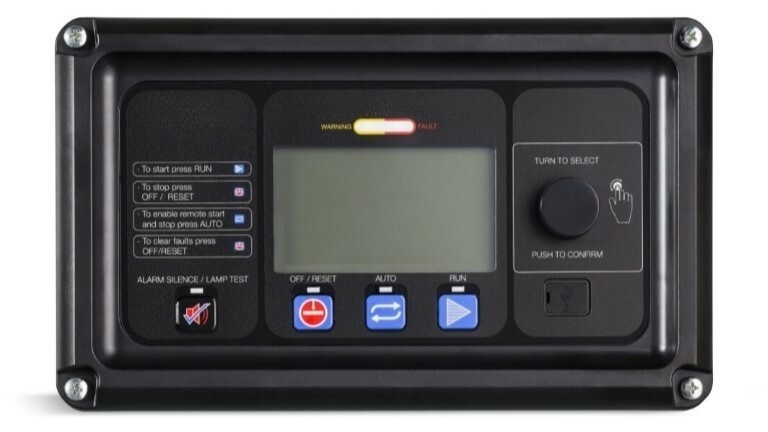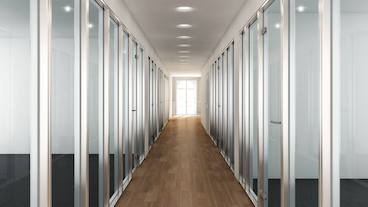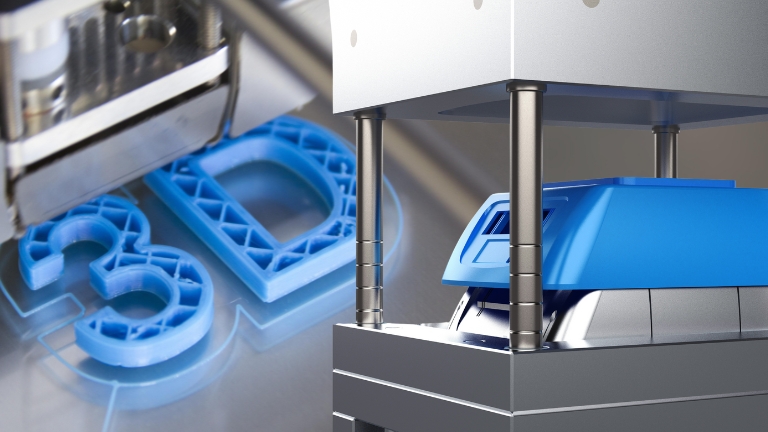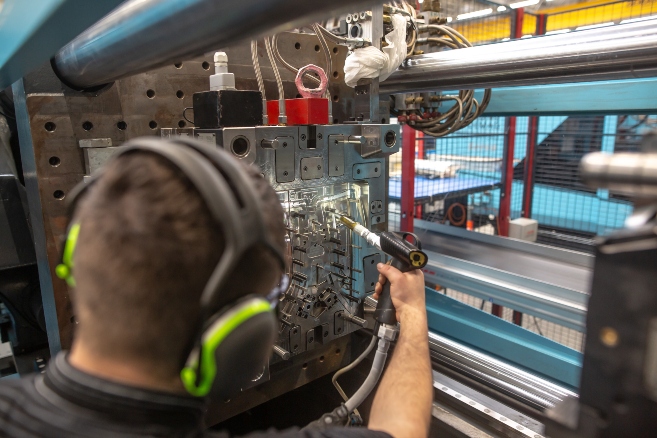Other thermoplastics forming
Bring your ideas to life with our limitless thermoplastic forming solutions!
At Nelson Miller Group, we don’t just shape materials—we sculpt innovation.
Transform your ideas into reality with our cutting-edge thermoplastics forming technology.
A versatile and widely used material in plastic manufacturing, thermoplastics open doors to a universe of design possibilities. From sleek and modern consumer products to robust industrial components, our advanced processes cater to the full spectrum of your imagination.
At NMG, we promise:
- Limitless innovation. Thermoplastics manufacturing unlocks a multitude of creative options. Enjoy innovative shapes and finishes to support a wide range of aesthetic goals.
- Peak precision. The state-of-the-art manufacturing technologies at our partner factories ensure that every detail of your vision is captured with exceptional accuracy. Our high-end designs bring your vision to life.
- Uncompromised quality. We're your one-stop service from design to mold-making, molding, and auxiliary processes. Quality is our top priority, and our professional quality team oversees advanced testing and close inspection of every product.
- Material versatility. Choose the perfect blend of strength, flexibility, and aesthetics for your project with our range of thermoplastic materials. Explore our extensive catalog of options or opt for a completely customized design.
Our capabilities
Materials
- PCTG
- PET
- PETG
- Surlyn
- PMMA
- PP
- ABS
- HDPE
Finishes
- Clear
- Frosted
- Natural
- Colors (white, green, red)
Branding options
- Stamping
- Screen printing
- Pad printing
- Hot transfer printing
- Labeling
- Shrink film
- Spraying
- Electroplating
Creativity meets precision with our unmatched expertise and commitment to excellence, whether you're crafting intricate prototypes or launching large-scale production. When choosing the right plastic manufacturer, it’s vital to ensure you partner with a company who has material expertise in mold manufacturing, knowledge about the forming process, and the type of plastic that is right for your design.
At NMG, we're not tied to a manufacturing site, specific equipment, or location. This allows us to find the precise manufacturing facility to deliver on form, fit, and function of your plastic product. Plus, we manage the entire process, end-to-end. Our experts are dedicated to turning your concepts into reality, providing guidance, and ensuring your success every step of the way. Together, let's push the boundaries of what's possible in the world of thermoplastics.
Explore our range of thermoplastic forming solution processes.
Thermoplastic forming is a versatile manufacturing process that involves heating a thermoplastic material to a pliable state, shaping it into the desired form, and then cooling it to solidify the shape. While plastic injection molding is one popular method, several other thermoplastic forming techniques offer unique advantages in different applications:
Extrusion
One of the most common thermoplastics forming methods, the process of extrusion involves melting the thermoplastic materials and forcing it through a shaped die to produce a continuous profile. It is used for creating a wide range of products, from simple pipes and tubing to complex profiles for window frames and automotive parts. The ease with which thermoplastics can be extruded allows for efficient and cost-effective mass production.
Key features:
- Versatility. Extrusion is highly versatile and can be used for a wide range of thermoplastics, including PVC, ABS, polycarbonate, and more.
- Continuous production. The process allows for continuous production of long profiles with consistent cross-sectional shapes.
- Complex profiles. Extrusion is capable of producing complex cross-sectional profiles, making it suitable for a variety of applications.
- Applications. Extrusion is commonly used for creating profiles and tubing with consistent cross-sectional shapes, such as window frames, pipes, gaskets, fasteners, discs, washers, shims and more. It is also utilized for coating wires and cables with a protective thermoplastic layer.

Machine for extrusion of plastic material
Blow molding
Blow molding is a technique primarily used to manufacture hollow plastic objects, such as bottles, containers, and automotive fuel tanks. The process involves melting a thermoplastic material and inflating it like a balloon within a mold to achieve the desired shape. This method is particularly suitable for producing large, lightweight, and seamless objects.
Key features:
- Versatility. Blow molding is versatile and can produce a wide range of container shapes and sizes.
- Cost-effectiveness. It is often cost-effective for producing large quantities of hollow plastic products.
- Uniform wall thickness. Blow molding allows for the creation of products with uniform wall thickness, ensuring structural integrity.
- Material efficiency. The process typically results in minimal material waste, contributing to cost efficiency.
- Applications. Blow molding is widely used in industries such as packaging, automotive, and consumer goods. It is the preferred method for producing plastic containers that require a hollow structure, combining efficiency with the ability to create complex shapes.

Thermoplastic blow molding machine
Thermoforming
Thermoforming is a process where a sheet of heated thermoplastic material is shaped using a mold. This method is commonly used for manufacturing packaging materials, disposable containers, and various consumer products. Thermoforming can be classified into vacuum forming, pressure forming, mechanical thermoforming, and twin-sheet forming, each offering distinct advantages based on the complexity and requirements of the final product. The process allows for the creation of both simple and complex shapes, making it suitable for a broad range of products.
Key features:
- Process flexibility. Thermoforming accommodates various thermoplastics, providing flexibility in material selection based on the application's requirements.
- Low tooling costs. Compared to other molding processes, thermoforming typically involves lower tooling costs, making it more cost-effective for certain applications, especially in the prototyping and low to medium-volume production stages.
- High production rates. Thermoforming is capable of high production rates, making it efficient for large-scale manufacturing.
- Applications. Thermoforming is employed across various industries and is commonly used for manufacturing, such as packaging (blister packs, clamshells, trays), automotive components (interior panels, trim pieces, and exterior parts), consumer goods (disposable cups, food containers, and display items), medical devices (trays and enclosures), and aerospace components.

Close-up of thermoforming machine making a mold
Compression molding
Compression molding involves placing a heated thermoplastic material into a mold cavity and compressing it to shape. This method is often used for producing components with intricate details and precise dimensions. Compression molding is well-suited for low to medium production volumes and is applied in the fabrication of products ranging from electrical components to appliance parts.
Key features:
- Tooling flexibility. Compression molding allows for the use of intricate and detailed molds, making it suitable for a wide range of part geometries.
- Material variety. Compatible with various thermoplastics, offering flexibility in material selection based on the application requirements.
- Low waste. The process typically generates minimal material waste, contributing to cost efficiency.
- Applications. Compression molding is often used for large and relatively simple parts, such as automotive components, appliance parts, and electrical enclosures. It is also ideal for manufacturing high-strength products, as the process allows for the incorporation of reinforcing materials like fibers. It is also well-suited for producing custom shapes and parts with varying thicknesses.

Compression molding of plastic bottle caps
Choosing the right process
Each of these thermoplastic forming processes presents distinct advantages, catering to a variety of applications across industries. Selecting the most appropriate method depends on factors such as the desired product, production volume, and cost considerations.
| Extrusion | Blow molding | Thermoforming | Compression molding | |
| Process description | This is a continuous process where a thermoplastic material is melted and forced through a die to create a shape. | Hollow shapes are formed by blowing air into a heated plastic tube or parison. | A sheet of plastic is heated and then shaped over a mold using vacuum or pressure. | Plastic material is heated and placed into a mold, then compressed to take the shape of the mold. |
| Types of products | Profiles, pipes, tubes, sheets | Bottles, containers, tanks | Trays, packaging, disposable containers | Complex and intricate parts, automotive components |
| Tooling cost | Moderate | Moderate to high | Low to moderate | High |
| Production rate | High | Medium to high | Medium | Low to medium |
| Design complexity | Simple to complex | Limited to simple | Limited to simple | Simple to complex |
| Material wastage | Low | Moderate | Moderate | Low |
| Wall thickness uniformity | Good | Good | Good | Excellent |
| Surface finish | Good | Good to excellent | Good to excellent | Excellent |
| Material selection | Wide range of thermoplastics | Limited to specific thermoplastics | Limited to specific thermoplastics | Wide range of thermoplastics |
| Applications | Packaging, construction, automotive | Beverage bottles, containers | Food packaging, medical trays | Automotive, electrical components |
Ready to start a project today?
Case studies
See real-world examples of how NMG has helped customers across the full spectrum of the supply chain, from design to delivery.
Read our blog!
Access industry updates, helpful how-tos, engaging infographics, and other resources for engineers and supply chain professionals on the NMG Blog.
Get in touch!
We can’t wait to create winning solutions with you.
For general inquiries, please fill out this form and our team will be in touch shortly.




